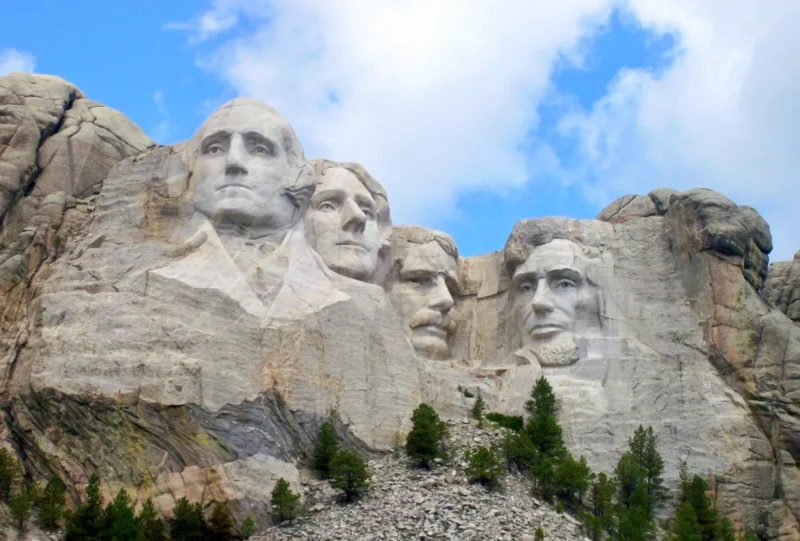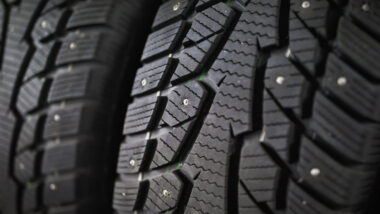Table of Contents Show
Have you ever visited Mount Rushmore National Memorial? If so, you’ve witnessed the sculpting genius of Gutzon Borglum and 14 years of hard work that captured the history of our country. But have you ever wondered what’s on the backside of Mt. Rushmore?
Perhaps you’ve heard theories or seen comical memes about what’s behind those gigantic faces. Let’s learn the truth about what’s on the backside of Mt. Rushmore!
What Is Mt. Rushmore?
In the 1920s, Doane Robinson of the South Dakota Historical Society wanted to bring tourism to South Dakota. With the help of Congressmen from South Dakota, they passed a bill to allow the construction of Mount Rushmore on federal land.
President Calvin Coolidge visited the Black Hills National Forest in 1927 and promised additional federal funding. By 1933, the National Park Service had controlled and managed the project while construction continued.
The demolition and carving began in 1927 and ended in 1941. They hired sculptor Gutzon Borglum to complete the project. He chose the four presidents because they represented the most critical events in the history of the United States.
George Washington represents the birth of a nation. Thomas Jefferson represents the country’s growth with his Louisiana Purchase and westward expansion.
Although Theodore Roosevelt was instrumental in protecting and conserving federal lands, this wasn’t why Borglum chose him to be one of the faces on Mount Rushmore.
Instead, Roosevelt’s other work, from building the Panama Canal to ending large corporate monopolies, made him the face of America’s development as a nation.
Finally, Lincoln led the country during one of the most critical times in history as the United States faced a split during the Civil War. He represents the preservation of the United States.
Today, Mt. Rushmore is South Dakota’s top tourist destination, welcoming over two million visitors annually. It has also been controversial, as the Black Hills have been sacred land to Native Americans in the region for thousands of years.
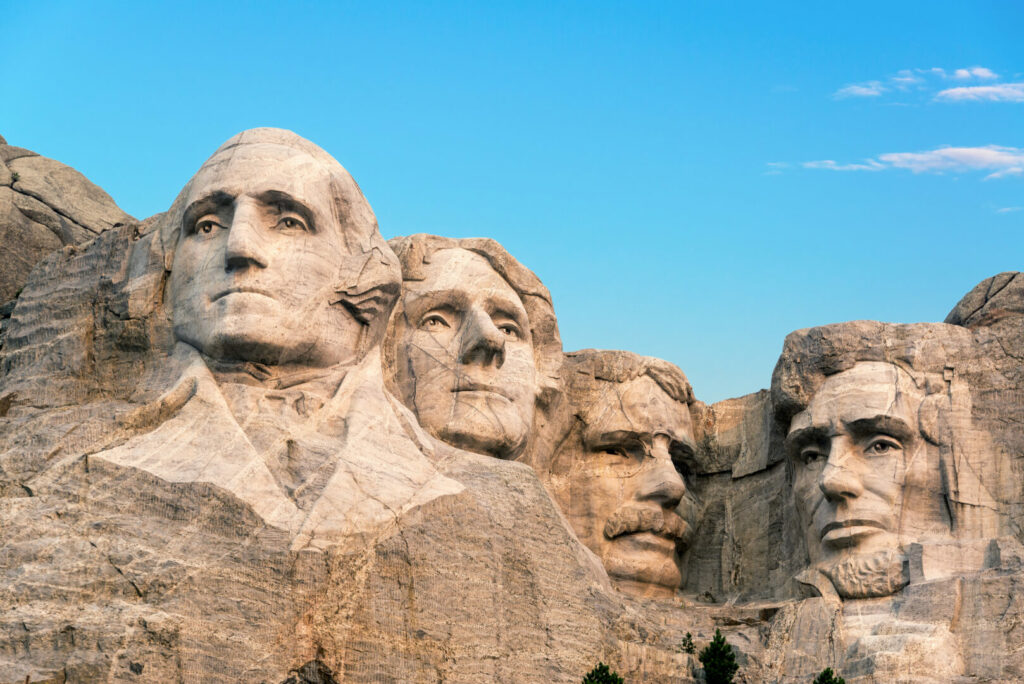
Where Is Mt. Rushmore?
Nestled in the Black Hills, Mt. Rushmore is off Highway 244, connecting Highway 16A to Highway 385 in southwestern South Dakota. Rapid City and access to Interstate 90 is a 30-minute drive northeast. Many visitors drive to Custer State Park and Wind Cave National Park while visiting Mount Rushmore.
What Does the Backside of Mt. Rushmore Look Like?
Although local gift shops will sell funny images of the backside of Mount Rushmore as the four Presidents’ rear ends and legs, this meme-like depiction is only a joke.
The backside of Mount Rushmore isn’t the backside of Washington, Jefferson, Roosevelt, and Lincoln.
Instead, it’s a beautiful scene of what the Black Hills looked like before the construction of Mount Rushmore. If you were driving through those green pines and granite rock formations, you wouldn’t even realize what was over the mountain on the other side.
Keep in Mind: If you’re looking to camp near Mt. Rushmore, we found the best campgrounds nearby!
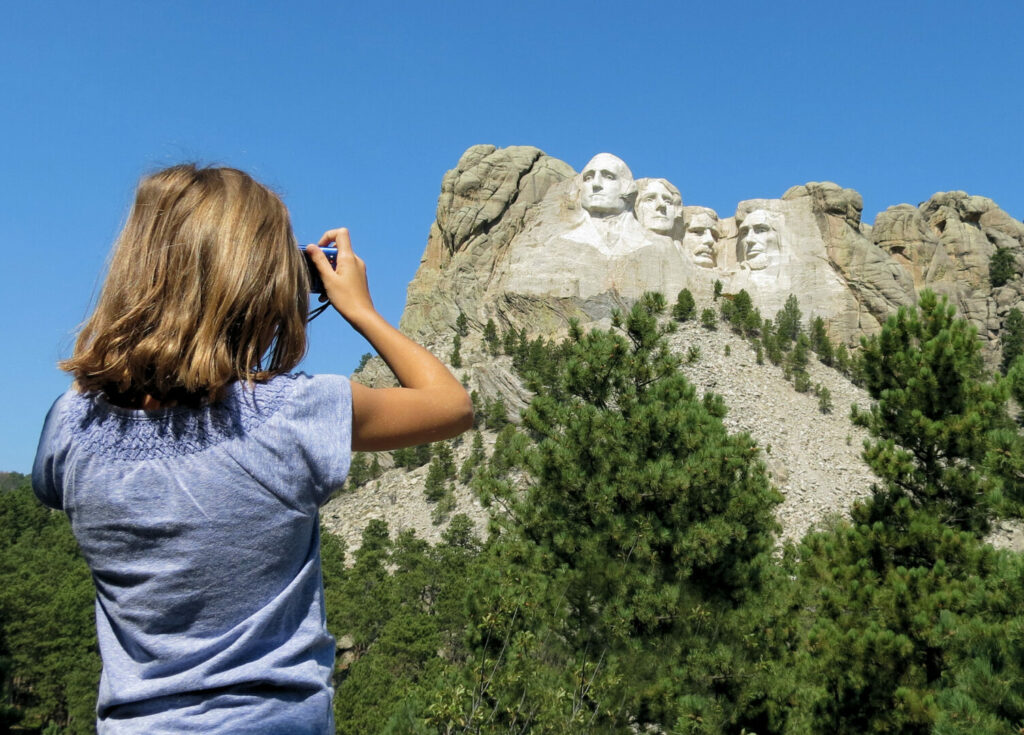
Is There Treasure Behind Rushmore?
The 2007 movie National Treasure: Book of Secrets might have piqued your interest in what’s behind Mt. Rushmore. However, don’t get your hopes up.
There is no long passageway leading to a treasure of gold. However, there is a 70-foot passageway inside the mountain that the National Monument’s sculptor created in the 1930s.
Borglum wanted this 8,000-square-foot cave to be the Hall of Records, one of the essential features of Mt. Rushmore. Unfortunately, his plan kept getting more and more elaborate. He wanted the vault to house replicas of important historical documents, artifacts, and more.
The 20-foot entrance doors would be glass and have a bronze eagle stretching 15 feet from top to bottom and 38 feet from wing to wing with the motto “America Marches On” above it.
This grandiose chamber never came to fruition because Congress refused to pay Borglum to complete more work than carving the four Presidents’ faces. The tunnel was the only part of Borglum’s plan that he completed.
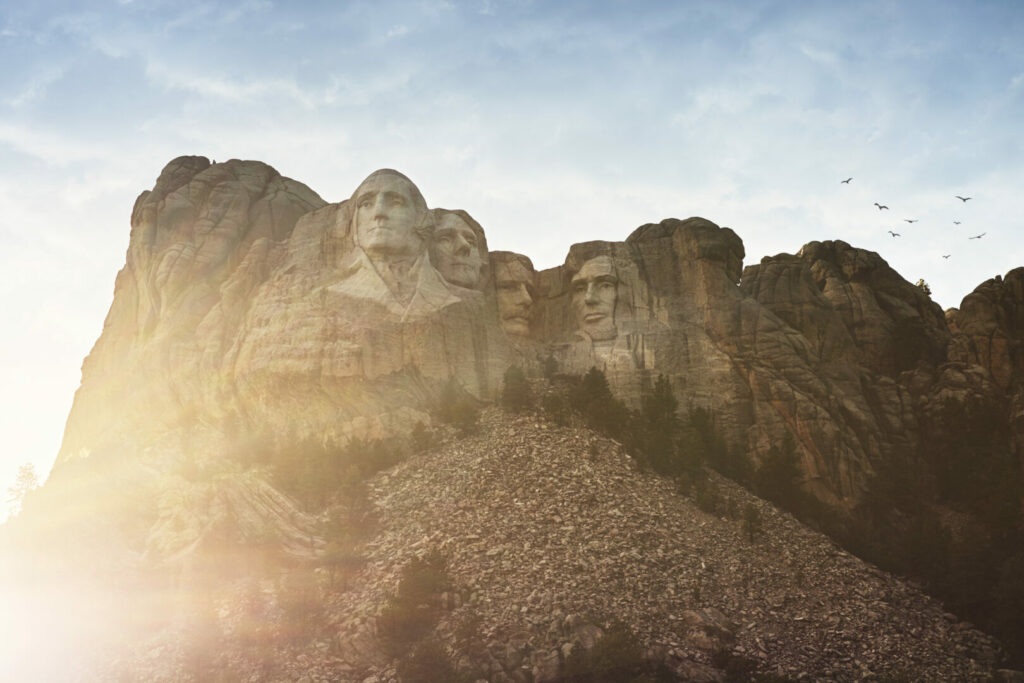
What Is the Vault Door on the Backside of Mt. Rushmore?
After Borglum died in 1941, his daughter wanted to honor her father’s vision. She persuaded the Mount Rushmore Society to raise $250,000 to build a vault at the end of the passageway. In 1998, they placed a repository of records on the floor of the hall entry.
According to the National Park Service, “The repository contains sixteen porcelain enamel panels. Inscribed on the panels is the story of how Mount Rushmore came to be carved, who carved it, the reasons for selecting the four presidents depicted on the mountain and a short history of the United States.”
It’s a far cry from Borglum’s ornate vision of an 8,000-square-foot chamber with fluted columns and a cathedral ceiling. However, it fulfills part of his idea to protect and preserve a piece of America’s history.
Keep in Mind: Who Is the 5th Face on Mount Rushmore? Click the link to find out!
Can You Go Inside the Rushmore Secret Room?
Visitors cannot visit the vault room. It’s like a time capsule, a location for future generations to learn more about how and why they carved Mount Rushmore.
However, it’s a public safety concern, and officials close it more to keep people from scaling the mountain than to keep the chamber a secret. Visitors can only see the vault door behind Abraham Lincoln’s forehead.
Is Mt. Rushmore Worth Visiting?
Mt. Rushmore is as iconic to American history as the Statue of Liberty and the Gateway Arch. Although these aren’t places you’ll visit for an entire day, it’s worth seeing them even once in your lifetime. They’re selfie locations you can claim as “I’ve been there, done that” opportunities.
But even more than posting photos for friends and followers, Mt. Rushmore is a place of historical significance and tremendous art.
The memorial makes you think about the impact those four Presidents had on the history of the United States. The Black Hills help you to respect and honor the Native Americans. There’s a rich cultural history here.
So the next time you plan a trip through South Dakota along Interstate 90, take a detour. Spend a day or two exploring this area and all its natural beauty, history, and heritage. Perhaps you’ll glimpse that hidden door behind Lincoln’s brow.
Have you ever visited Mount Rushmore National Memorial? Did you wonder what was behind it?




